Although it’s not an idea that has yet trickled down to $200 printers drop-shipped from China, one of the most innovative ideas in the 3D printing world in the last few years is putting plastic down on a conveyor belt. Yes, MakerBot was doing it back in 2010, but we’re not going to talk about that. Printing on a conveyor belt instead of a static bed allows you to easily print multiples of an object autonomously, without any human interaction. If you’re really clever, you could rotate the hot end 45° and build a piece of plastic that is infinitely long, like the printer [Bill Steele] built, the Blackbelt, or ‘the CAD files might exist somewhere’ Printrbot infinite build volume printer.
At this year’s World Maker Faire, we didn’t see an infinite printer, but we did catch a glimpse of an idea that could reliably take 3D printers into production. It’s a Multiprinter Autonomous 3D Printer, designed and built by [Thomas Vagnini].
The idea of using 3D printers for production and manufacturing is a well-studied problem. Lulzbot has a heated room filled with printers they use to manufacture all their machines. Prusa’s manufacturing facility is similarly well-equipped. However, both of these setups require helper monkeys to remove a part from the bed and set the machine up for the next print.
Instead of a strictly manual process, [Thomas]’ machine uses a sort of cartridge-based system for the printing bed. The glass beds are stored in a cassette, and for the first print, the printer pulls a bed onto the heated build plate through a system of conveyors. When the print is finished, the part and the bed ar fed into a rotating cassette, where it can be removed by a tech, prepped for the next print, and placed back in the ‘bed feeder’. It’s a system that brings the manual intervention cycle time of a 3D printer down to zero. If you’re producing hundreds of parts, this will drastically speed up manufacturing.
While it is a relatively niche idea, this is a very well-designed machine. It’s all laser cut, uses core-XY mechanics, and with the right amount of tuning, it does exactly what it says it will do. It’s not for everybody, but that’s sort of the point of manufacturing parts on a 3D printer.

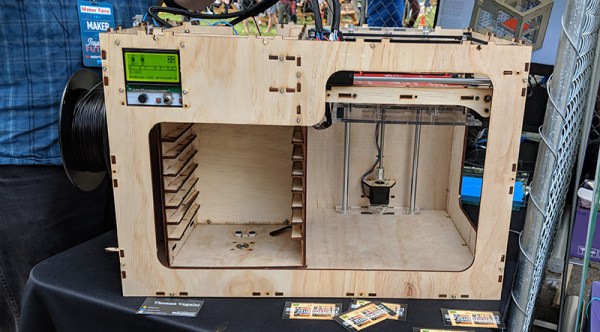







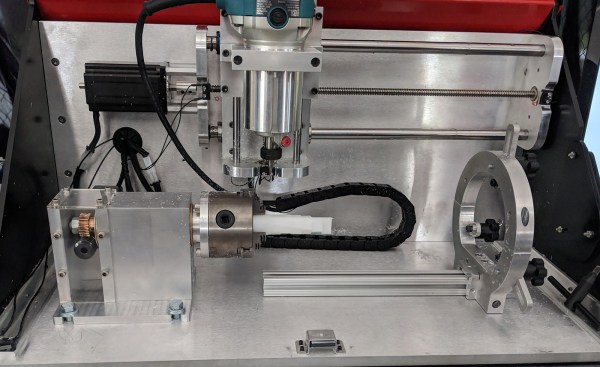






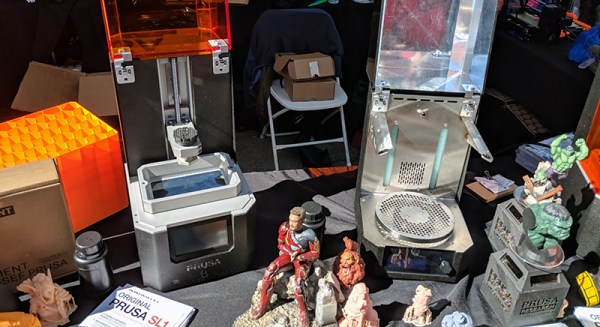













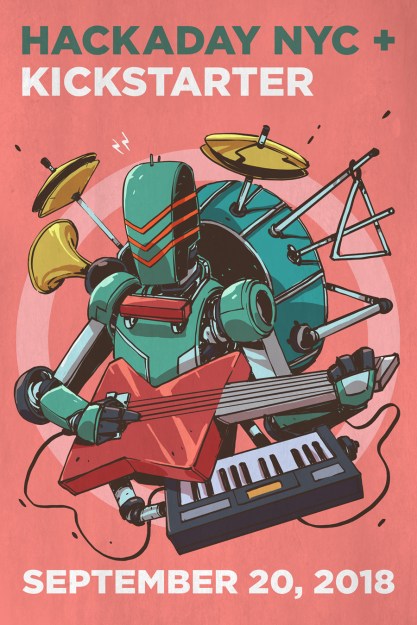



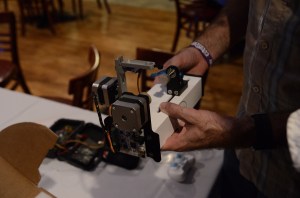 [Windell and Lenore] from Evil Mad Scientist Laboratories brought a few hacks along. They picked up an old Radio Shack music player chip at the
[Windell and Lenore] from Evil Mad Scientist Laboratories brought a few hacks along. They picked up an old Radio Shack music player chip at the 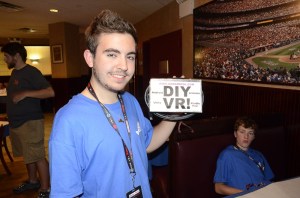 [Cal Howard] brought his DIY VR goggles. [Cal] converted a Kindle Fire into an Oculus Rift style head mounted display by adding a couple of magnifying lenses, some bamboo kebab sticks to hold the lenses in place. Judicious use of cardboard and duct tape completed the project. His current hurdle is getting past the Fire’s lack of an accelerometer. [Cal] planned to spend Sunday at Maker Faire
[Cal Howard] brought his DIY VR goggles. [Cal] converted a Kindle Fire into an Oculus Rift style head mounted display by adding a couple of magnifying lenses, some bamboo kebab sticks to hold the lenses in place. Judicious use of cardboard and duct tape completed the project. His current hurdle is getting past the Fire’s lack of an accelerometer. [Cal] planned to spend Sunday at Maker Faire









